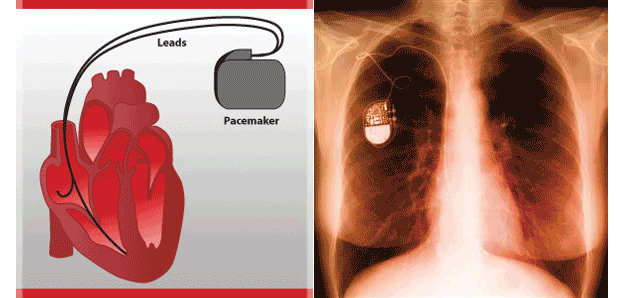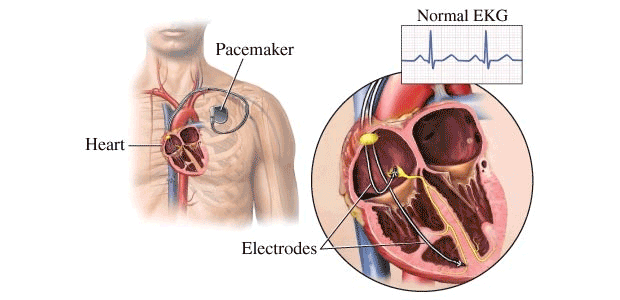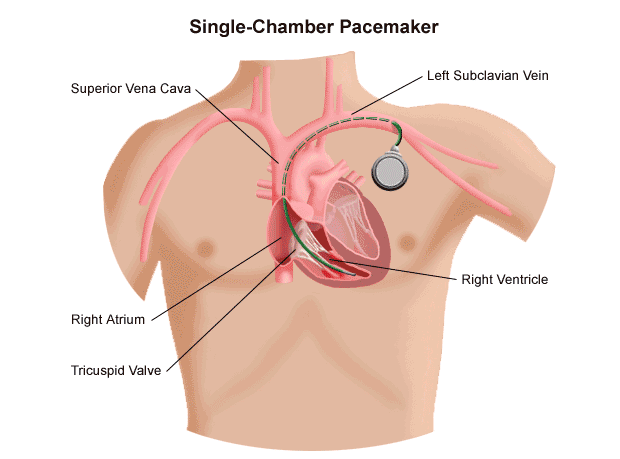Heart muscle weakness can be caused by many things. Most heart diseases, if left unattended, will eventually lead to heart muscle weakness. The result is the heart can not pump enough blood, causing heart failure in the end.
In the past, when treating heart muscle weakness, doctors would focus on strengthening the heart muscles using medications. There was an idea to use muscles from other parts to help, but it didn't work in practice. At present, stem cell technique is used so that the cells grow into healthier heart muscles, but more studies are needed to confirm whether this is really good. |
 |
Recently, it was noticed that weak heart muscles not only work less but also do not work in synchrony. This is because of the irregular electricity travelling within the heart muscle. When the heart beats (or contracts), blood is pumped to every organ in the body, but due to this condition, blood does not go far because the main heart chamber does not contract in sync. It's like two persons rowing a boat at a different pace and direction _ not only does the boat go slowly, but the rowers also become more tired. So an idea was proposed _ if the heart could work in sync, it would work more effectively in pumping blood. In the past, we had a permanent pacemaker for patients whose heart beat very slowly. It is an electronic device implanted under the skin and linked to the heart to make sure the electricity is in check and the heart does not beat too slow. |
 |
Today's technology and doctors have resulted in an even better version of pacemaker, which could be linked to various parts of the heart to adjust electricity, making the heart chambers work rhythmically and naturally in synchrony.
Heart failure and heart muscle weakness could lead to pulmonary edema, shock, or even a sudden stop of the heart. In that case, intervention in form of defibrillation, using direct electric current to reset the heart rhythm, is required to bring the person back to life as soon as possible. If left for too long, the chance is very slim. We are talking life-changing minutes or seconds here. A defibrillator and pacemaker are put together in one device for patients with weak heart muscles. A patient of mine was about 50 years old and he came to see me because he had heart failure. He felt tired easily, although in the past he could exercise on a bicycle for an hour everyday. When he came to see me, he could barely walk 10 metres without pausing for breath. Sometimes, he couldn't lie on his back and some nights he had to sleep sitting upright. He had had the symptoms for a few years. |
 |
I found no problem of narrowed coronary arteries at his heart, so I assumed that it could be some virus infection he had in the past that caused heart muscle weakness. I prescribed some medicines, but he didn't feel much better. I referred him to have the newer generation of pacemaker or so-called CRTD device to help his heart work better. Soon after, his condition improved and he felt much stronger.
The good thing about this device is that it also records the heart's activities when the person is not in hospital. I found that his heart had ventricular fibrillation (cardiac arrhythmia) twice, and without the defibrillator, he might not have survived. Ventricular fibrillation could be fatal and almost hundred per cent of the time it will not correct by itself. When I told him about the two incidences, he was over the moon, knowing that he had been lucky. He commented, "This device is really worth the money! It has saved my life twice!" Well, it's only 300,000-400,000 baht, compared to your life. The longer you have it, the more value for money you get. Without this device, you probably wouldn't have made it to the doctor. Technology today can save many lives, but it is only temporary. Nobody lives forever, and death is inevitable. The important thing is not to delay death, but to make sure your living moments are happy. |
Wednesday, 22 August 2012
Making peace with a pacemaker
Subscribe to:
Post Comments (Atom)

No comments:
Post a Comment